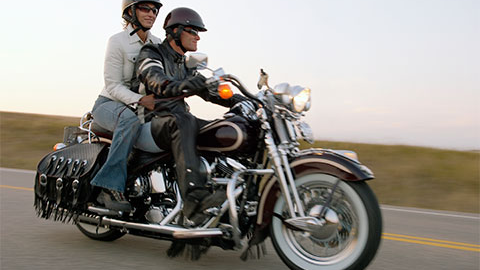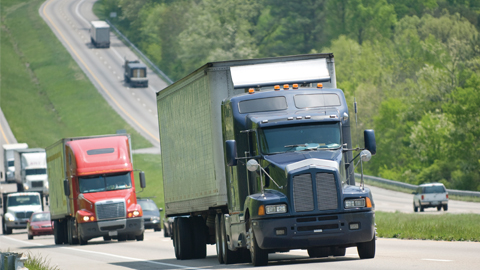Passengers: Good Company - But Are They Safe?

For drivers who are away from home for days or weeks at a time, it can be tempting to have a family member or friend accompany them. That’s understandable. Spending time with family is important, and having someone to talk to is enjoyable. But having passengers in the vehicle also comes with risks.
One concern is that passengers can be hurt as a result of accidents. According to the Bureau of Labor Statistics, trucking is the eighth most dangerous occupation, based on the fatality injury rate per 100,000 workers, mostly because of vehicle-related crashes.1 While trucks are not inherently unsafe, they do spend more time on the road than many other vehicles. This increases their potential risk for being involved in crashes. Passengers may be even more likely to be injured in a crash than a driver if they are in a sleeper berth or not restrained by a seatbelt. Serious accidents aside, passengers can also hurt themselves simply by falling while getting in or out of the truck.
Passengers, especially young children, also can create distractions that can cause drivers to be less attentive and more likely to be involved in accidents.
Having a passenger along can also result in more frequent stops. Every time drivers leave the highway, the risk of being involved in an intersection or parking lot incident increases. It can also put drivers behind schedule and leave them rushing to catch up. Going on site-seeing excursions with a big truck also has the potential to increase accident risk.
Shipper requirements and heightened security can also create problems. Many shippers today, over concerns about security or potential liability for accidents and injuries, strictly forbid unauthorized personnel on their properties. As a result, passengers may be prohibited.
Many trucking companies are taking a more cautious approach toward passengers than they have in the past. Some have "no passenger" policies, while others have policies in place that significantly restrict the practice. This evolution has come about primarily from the growing realization that trucking is a serious and potentially dangerous business that can expose passengers to unnecessary risks.
Recognizing these dangers, it makes sense for businesses to prohibit passengers in their vehicles. However, when a formal "no passenger" policy is not possible, or rare exceptions are made, careful oversight is needed. Some best practices to consider include making sure the driver meets minimum experience and safety performance requirements, such as:
- At least one year of employment
- At least two years of professional driving experience
- A safe driving record (no recent moving violations or preventable accidents)
- Be an employee in good standing with no company policy violations
Additional controls for passengers should include:
- Requiring all passengers to be at least 18 years old
- Not allowing more than one passenger to accompany the driver
- Limiting the time a passenger is permitted to accompany the driver
- Requiring passengers to use seatbelts and proper three-point contact technique when entering and exiting the vehicle
- Permitting passengers only during times when favorable road and weather conditions are expected
- Restricting passengers from accompanying drivers when they are transporting hazardous materials
- Not allowing the vehicle to be used as a personal conveyance for non-work activities
- Requiring passengers to acknowledge safety rules and company policies by signing a hold harmless agreement
To comply with Federal Motor Carrier Safety Regulations, a written passenger authorization is required when passengers accompany drivers in regulated commercial vehicles. The authorization must state the passenger’s name, trip origin and destination and date the authorization expires (49 CFR Part 392.60). The authorization must accompany the driver and passenger.
Source
1 National Census of Fatal Occupational Injuries in 2014, Bureau of Labor Statistics News Release, September 2015.




